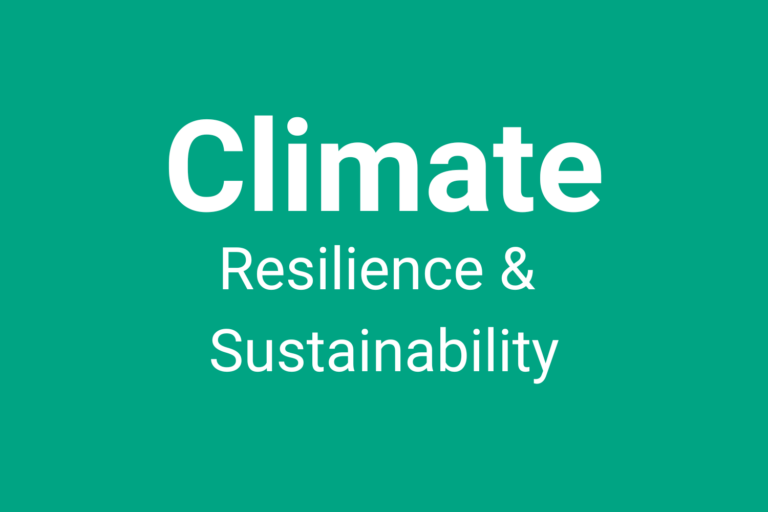Future-Proofing Data Centers: Climate Resilience And Sustainability

Author: Alessandro Lombardi, President and Chairman of Elea Digital Data Centers, on Forbes.
I see the catastrophic floods that recently ravaged the Brazilian city of Porto Alegre as a horrifying preview of the threats climate change poses to critical digital infrastructure worldwide.
The devastating scenes—submerged neighborhoods, vehicles swept away, half a million displaced from homes—underscore that climate change’s consequences are no longer a future risk but a present-day reality unfolding before our eyes.
Climate Change And Data Centers
The deluge disrupted vital digital services by flooding data centers, the backbone of our modern world’s interconnected ecosystems. During this time, my Brazilian-based company received additional workloads to help maintain essential operations and support disaster response. While I believe we were able to demonstrate resilience in the face of disaster, it also exposed the underlying vulnerabilities to data centers globally as escalating climate impacts strain digital infrastructure.
However, this urgency to climate-proof such critical infrastructure also presents a unique opportunity for innovation. I believe industry leaders now have an chance to reevaluate how data centers are designed, operated and protected to withstand environmental changes.
Renewable Energy And Water Stewardship
Data centers drive about 1% of global electricity demand, with this figure expected to double by 2026 due to AI compute demands, eventually producing CO2 emissions annually similar to aviation’s carbon footprint. Therefore, the transition to renewable energy sources is not just a choice; it’s necessary. It’s a commitment to mitigating environmental impacts while enhancing resilience as climate change strains conventional power supplies and water resources.
Along with other lessons, the Porto Alegre floods also foreshadowed the water scarcity crisis, a global issue projected to affect 1.8 billion people by 2025 due to rising temperatures and precipitation shifts. This crisis is particularly relevant to data centers, which rely heavily on water for cooling systems.
The floods disrupted data center operations, highlighting the operational risks water scarcity poses. Renewable energy isn’t just environmentally critical; it’s strategically vital to insulate digital infrastructure resilience by decoupling from volatile fossil fuels.
Embracing Sustainable Energy Models
According to the International Energy Agency, climate change could disrupt up to a quarter of the global power supply in severe scenarios, underscoring the importance of embracing sustainable energy models and climate adaptation for data centers to withstand escalating weather scenarios. A sector-wide goal of eventually transitioning all data centers to 100% renewable power and tripling renewable power globally by 2030 is crucial to the industry’s sustainability aspirations.
This ambitious target would drive sustainable innovation while challenging assumptions that sustainability comes at the cost of performance or reliability. Proving renewable energy can reliably power mission-critical operations could catalyze a paradigm shift, compelling companies to embrace sustainability as existential for business continuity, not just optics.
While curbing environmental impacts is essential, future-proofing digital infrastructure against climate threats like intensifying natural disasters must be the focal point for resilience strategies. This requires a holistic, innovative approach. Here are some areas to focus on.
1. Water Stewardship
The data center industry must prioritize investing in water-efficient technologies like free air cooling, on-site water recycling and reuse systems to minimize vulnerability to droughts and water scarcity. Strategically locating facilities in water-abundant regions whenever possible can further mitigate water-related risks and ensure a reliable supply for cooling purposes.2. Climate-Resilient Design
Climate-resilient design strategies, such as elevating structures and deploying robust flood defenses, can also help data center facilities withstand the impacts of climate change. For instance, raising the height of data center buildings above flood levels and installing flood barriers can help prevent water damage during extreme weather events.Incorporating backup power systems and redundancy across geographically distributed sites can hedge against any location compromised by extreme weather events or natural disasters.
3. Renewable Integration
Maximizing renewable energy sources across data center operations can also help the industry reduce its carbon footprint. Exploring on-site renewable generation, energy storage solutions and seamless transitioning between renewable and non-renewable power sources can ensure continuity during potential disruptions while aligning with sustainability goals.4. Intelligent Efficiency
Leveraging AI and machine learning can optimize energy use and predictive maintenance in data centers, enabling continual tuning and adjustment as climate impacts intensify. These technologies can provide valuable insights for proactive climate adaptation strategies, enhancing the resilience and efficiency of operations. Overall, remaining vigilant about energy use will be crucial to maintaining these finite resources.5. Creative Cooling
I believe the industry should explore novel methods like complete immersion or liquid cooling systems to curb water consumption dramatically while capturing expelled hot air to generate clean energy.These approaches can significantly reduce data centers’ environmental footprint. However, it’s important to note that these methods may require significant upfront investments and could pose operational challenges, such as the need for specialized equipment and maintenance.
6. Cross-Sector Collaboration
Achieving climate resilience is a collaborative effort that requires partnering with renewable energy providers, municipalities, emergency responders and other stakeholders. Each entity’s contribution is crucial as data centers supply vital digital capabilities for climate coordination and disaster response efforts.Resilience hinges on multifaceted, long-term solutions spanning sustainable design, renewable power, intelligent efficiency and strengthened climate preparedness.
Steering Toward A Sustainable Digital Future
Devastating events like the Porto Alegre floods viscerally demonstrate inaction risks disproportionately jeopardizing marginalized communities. We can no longer treat climate change as a theoretical future issue; its cascading effects on vital resources like water, power and crucial infrastructure are happening globally.
Data centers require massive energy and water resources, so shortages could easily paralyze these linchpins of modern digital society. Therefore, I see renewable energy integration, water stewardship and climate-hardened designs as essential resiliency measures beyond eco-friendly niceties.
While the challenges appear daunting, the existential stakes of hardening digital infrastructure demand committed action. The path forward requires boldly transformative policies and investments in next-generation sustainable solutions to fortify our vital data center networks against creeping climate chaos. This systemic undertaking, though potentially arduous, is obligatory to navigate the turbulence looming ahead and help steer society onto a greener, more resilient digital future.


